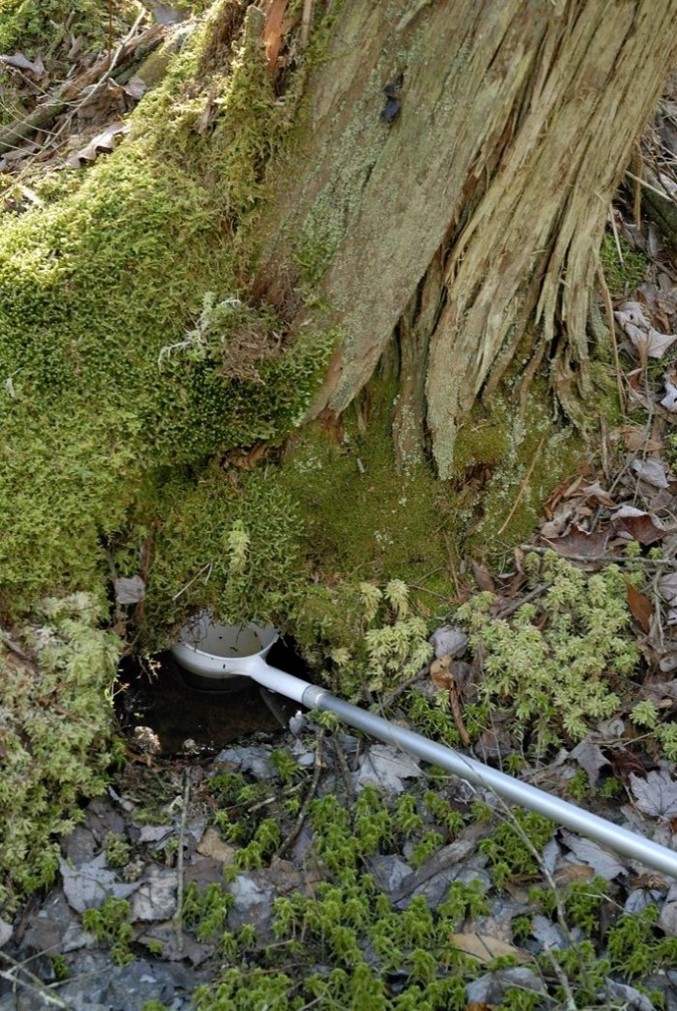Culiseta melanura
Common names: Black-tailed Mosquito

Adult Culiseta melanura mosquito. Photo Credit: The Connecticut Agricultural Experiment Station
- Geographic Distribution
Culiseta melanura mosquitoes are found in lowland swamp areas from southeastern Canada through northeastern US and the Great Lakes to southern Florida and as far west as Texas. It has also been found in Mexico and the Caribbean. In the Great Lakes region, Culiseta melanura lay eggs in sphagnum bogs where maple and tamarack trees are found. These sphagnum bogs are only found in the northern tier of Indiana (see map below). In the Northeast, Culiseta melanura are found in red maple and Atlantic white cedar wetlands. In the southeast, the black-tailed mosquito can be found breeding in bald cypress and tupelo bottomlands.

Map: Counties where people and horses have an increased risk for Eastern equine encephalitis virus infection


Sphagnum bogs where Culiseta melanura can be found. Photo Credit: Lee Green, IDOH
- Life Cycle
Female Culiseta melanura mosquitoes lay their eggs in rafts often in underground crypts created by tree roots. They favor habitats of cool, acid water with a pH of approximately 5.0 or lower at the edges of bogs and swamps.


(left) Culiseta melanura breeding habitat, Photo Credit: The Connecticut Agricultural Experiment Station (right) Culiseta melanura breeding habitat, Photo Credit: Lee Green, IDOH
Culiseta melanura mosquitoes are multivoltine. Females most actively take blood meals during the first few hours after sunset but continue throughout the night at a lower level. Females primarily feed on songbirds which plays a large role in amplifying Eastern Equine Encephalitis virus (EEEV) in nature. Although they prefer to feed on birds, they can also take blood meals from mammals, including humans. Adults look similar to Culex species but can be distinguished by its long, curved proboscis.

Adult female Culiseta melanura with long, curved proboscis, Photo Credit: Lee Green, IDOH
- Commonly Associated Diseases
- Prevention
The best way to prevent diseases associated with Culiseta melanura mosquitoes is to avoid mosquito bites. Please see our mosquito bite prevention page for more information.

